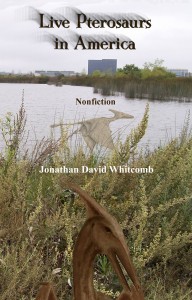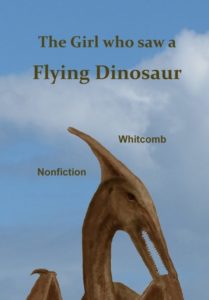How do you promote the sales of the third edition of your nonfiction book? I’d like to know that. On Amazon, the first two editions of my cryptozoology book Live Pterosuars in America are still being purchased while the newly published (expanded, improved) third edition, at almost the same price, has not sold a single copy.
It’s not that the earlier editions were received poorly. Favorable reviews from ordinary readers include the following:
“I couldn’t put this book down. It is absolutely fascinating to read about eyewitness accounts of the people who have seen these creatures. To learn about these testimonies from such an open minded perspective is refreshing in the extreme! The way that our school systems and scientists alike are indoctrinated is sad. There is so much money out there being used for research, if only they would use it for good. I highly recommend this book to anyone! People should know the truth about what is going on. No one ever hears anything about this unless they conduct extremely specific internet searches, even then, information is minimal. Jonathan Whitcomb needs to write more books!” [review on Amazon.com, referring to second edition of Live Pterosaurs in America]
From a common reader who comments like that, what author could ask for more? But it seems that the online word about the first two editions has spread so far on the internet that it takes attention away from the improved third edition.
How does the book relate to the common LDS reader? Written purely in cryptozoology genre, in contrast to the first edition of my first book Searching for Ropens (which had many references to religious concepts and principles), my recent nonfiction takes the reader into the experiences of eyewitnesses of apparent living pterosaurs. Live Pterosaurs in America allows readers to use their own religious (or non-religious) perspective in evaluating the possibility of modern living pterosaurs, regarding the origin of life and how various concepts of evolution relate (or do not relate). To the point, following the Savior’s commandment in the eleventh chapter of Third Nephi, I avoid religious disputation by avoiding tearing down another religion.
From the Book Description on Amazon:
Encounter eyewitness accounts of living pterosaurs in the United States. Live “pterodactyls?” In the United States? Many scientists have long assumed all pterosaurs died millions of years ago. Now take a whirlwind tour of many years of investigations in cryptozoology, and prepare for a shock: At least two species of pterosaurs have survived, uncommon, not so much rare as widely, thinly distributed.




